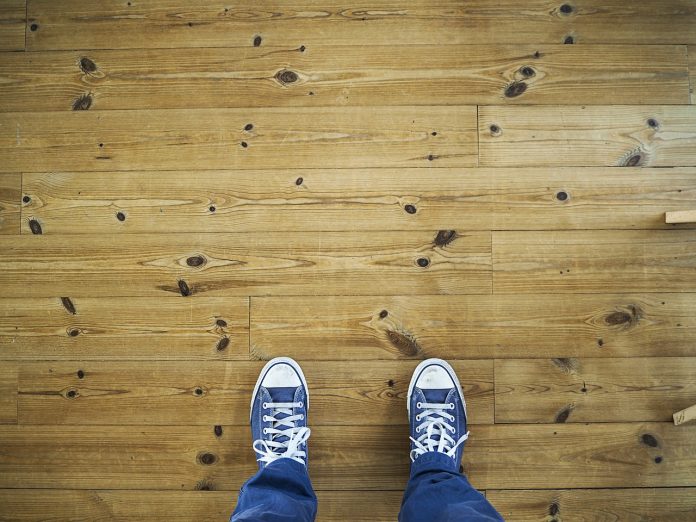SOUTH MADISON, Wis. — As thousands of visitors each day walk across a new flooring installation in University of Wisconsin-Madison’s Union South, they might not realize they’re participating in a leap into the future of renewable energy production.
A research team led by Xudong Wang, a University of Wisconsin-Madison professor of materials science and engineering, in collaboration with the UW-Madison Grainger Institute for Engineering, has installed a high-tech flooring prototype.
This flooring harvests the energy of footsteps and converts it into electricity.
The prototype is a 96-square-foot rectangle of modified wood flooring panels located inside the building’s West Johnson Street and Orchard Street entrance.
It looks just like typical wood flooring, but its low-tech facade masks innovative technology that could soon contribute to the expanding suite of renewable energy options.
The electricity generated powers an informational sign that explains the technology and tracks the power harnessed by thousands of footsteps over the coming months.
The power-generating floor includes an additional green credential in that its functional component is mostly made from recycled wood pulp, an abundant waste material.
The wood pulp is central to the technology’s function. The pulp, which is already a common component of flooring, is chemically treated to produce an electrostatic charge when it comes into contact with an embedded electrode.
The charge is transmitted through embedded wires and can power lights or charge batteries.
And because wood pulp is a cheap, abundant and renewable waste product of several industries, flooring that incorporates the new technology could be as affordable as conventional materials.
While there are existing similar materials for harnessing footstep energy, they’re costly, nonrecyclable and impractical at a large scale.
That’s why Wang is so excited about the prototype installation in Union South, which is the result of research first published in the journal Nano Energy in 2016.










